Clipart tagged: ‘Refinery’
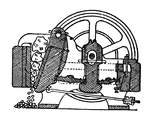
Blake Ore Breaker
This illustration shows a Blake Ore Breaker (stone crusher), used in a gold stamp mill. This crusher…

Mechanical Rabble
"A representation of one of the class of mechanical rabbles known as Witham's machine rabble applied…

Parting Vessel
"The parting vessels are of porcelain which, to protect them against fracture by irregular heating,…
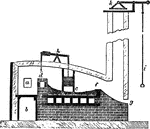
Puddling Furnace
"The general arrangement of a puddling furnace; a is the charging door for the fuel, d the bridge with…
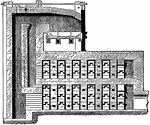
Puddling Furnace
"The general arrangement of a puddling furnace; a is the charging door for the fuel, d the bridge with…
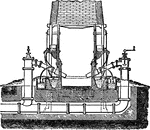
Refinery
"The term "refining," although in strictness applicable to all methods by which impure iron is purified,…

Refinery
"The term "refining," although in strictness applicable to all methods by which impure iron is purified,…
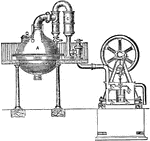
Vacuum-pan
"The vacuum-pan is in universal use in all European sugar-refineries, and in all well-provided sugar-plantations.…
